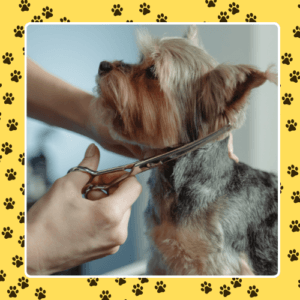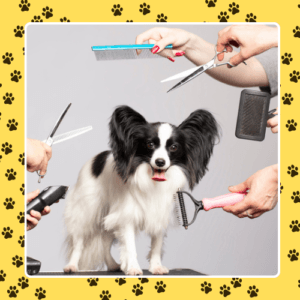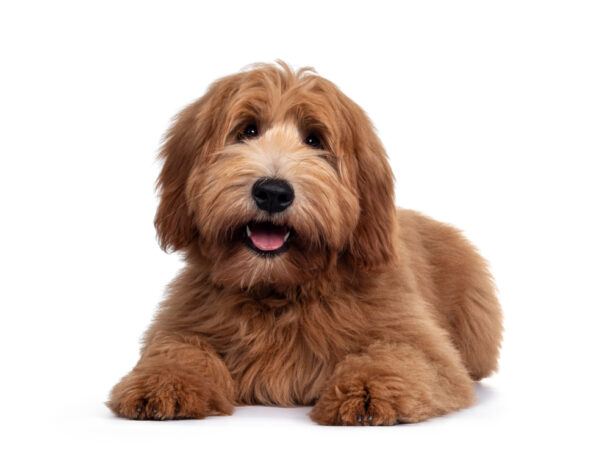LifeWithMyDogs is supported by our audience. When you purchase through one of our links, we may earn a small affiliate commission. As an Amazon Associate I earn from qualifying purchases. Your cost is not affected.
**********
Sanitary trims, also known as hygiene trims or potty cuts, are essential grooming procedures for dogs, ensuring their cleanliness and overall health. This article provides a comprehensive overview of sanitary trims for dogs, emphasizing their significance, the process involved, and the recommended frequency of performing them. Additionally, it explores the benefits of incorporating sanitary cut for dogs into their grooming routine.
Understanding Sanitary Trims
Sanitary trims involve the careful trimming or shaving of a dog’s hair in the areas most susceptible to dirt accumulation, such as the genitals, anus, and the underside. The primary aim of sanitary trims is to keep these sensitive areas clean, free from matting, and prevent potential health problems.


Why Are Sanitary Trims Important?
There are several reasons why sanitary trims are essential for your dog’s wellbeing:
Preventing Infections
Sanitary trims help to prevent the accumulation of dirt, feces, or urine, which can lead to bacterial or parasitic infections. In fact, between these trims, you need to ensure that you keep the area clean, too.
Avoiding Matting
Regular trimming prevents the hair around these sensitive areas from tangling into mats, which can cause skin irritation and discomfort. If these matted regions of the genital area remain and become infected, you might be headed to the vet for medical help. At the very least, you will have more odor issues from the buildup.
Reducing Odor
Unpleasant smells often arise from the accumulation of urine and feces in the fur. Regular sanitary trims can help eliminate these odors. The “doggy odor” is often merely the need for a hygiene trim. If your pet begins to smell, check his private areas first. You might find an easy solution to the problem.
Maintaining Hygiene During Heat Cycles
Female dogs require additional attention during their heat cycles. Trimming the hair around the vulva helps to keep the area clean and prevents potential infections.
Don’t Dogs Keep Themselves Clean?
Yes, some dogs do. But not all. And even those who do keep themselves clean benefit from the sanitary trim. The reason is simple. While they might try to maintain cleanliness, those frequent trims help them do so more efficiently and completely. Remember always to include the sanitary area in your regular grooming.
How Often Should Sanitary Trims Be Done?


The frequency of sanitary trims depends on various factors, such as the dog’s breed, the length and type of their coat, and their overall grooming routine.
Long-haired or continually growing hair breeds may require more frequent sanitary trims. Indicators that a sanitary trim might be needed include a strong, unpleasant smell around the dog’s private areas, matting or tangles, and difficulty in cleaning these areas.
Note that short-haired breeds seldom need the hygiene trim. You might, however, need to wash the area to keep it clean. While male dogs often need cleaning, female dogs also do so during heat cycles unless they are spayed.
The Sanitary Trim Process

Performing a sanitary trim requires precision, attention to detail, and the right tools. The process involves the following steps:
- Preparation – Brush out any tangles or mats in the areas to be trimmed and have treats on hand to reward your dog for their cooperation.
- Identifying the Trim Areas – Locate the areas that require trimming, which typically include the genitals, anus, and underside.
- Trimming – Use grooming shears or clippers to trim the hair in these sensitive areas gently.
- Removing Excess Hair – Once the hair is trimmed, remove any loose or excess hair.
- Post-Trim Care: Reward your dog for their cooperation and monitor the trimmed areas for any signs of redness, irritation, or infection.
Necessary Tools
Professional groomers use several tools for sanitary trims:
- Clippers – These are used for trimming a dog’s fur to a specific length and can be used for detailed work on specific areas. Used correctly, clippers are quite safe. However, be extremely careful to use the clippers in the correct direction and avoid clipper burns.
- Scissors – These are used for trimming and shaping a dog’s fur. Use extreme caution to avoid causing any problems or injuries.
- Brush – This helps in removing loose fur, dirt, and tangles from a dog’s coat. Remember to clean the dog hair from the brush after using it.
- Comb – This is used to smooth and detangle a dog’s coat. Use caution, as the dog’s genitals are sensitive areas.

Risks and Considerations
While sanitary trims are generally safe, there are potential risks to consider:
- Injury Risks – Improper handling of grooming tools can accidentally injure the dog.
- Skin Irritation – Some dogs may experience irritation after a sanitary trim, especially if they have sensitive skin. I always recommend using a slightly longer clipper blade for the first few times. This allows checking on the skin sensitivity while still removing long hair.
- Behavioral Reactions – Some dogs may become anxious or stressed during grooming. For these dogs, a second person helps to keep the dog calm.
- Professional Assistance – If unsure about performing a sanitary trim at home, it’s advisable to seek professional assistance. If you are unsure of a groomer to trust, ask your vet for a recommendation.
Sanitary Trims for Different Breeds

Different dog breeds have different coat types that can affect their grooming needs. For instance, breeds with longer or thicker coats, like poodles, doodles, or bichon frisés, may require more frequent and comprehensive sanitary trims.
Also, as mentioned earlier, some short-haired dogs don’t require the sanitary trim at all. If you are unsure, check with your vet.

DIY vs. Professional Sanitary Trims

The choice between DIY and professional sanitary trims depends on the owner’s skill level, available equipment, and willingness to pay for professional services.

Video Credit: @GoGroomer
Dog Sanitary Trim Is Necessary
A sanitary trim is a vital grooming procedure that helps maintain a dog’s hygiene and well-being. Regularly trimming the hair around your dog’s sensitive areas can prevent infections, matting, and odor. Whether performed at home or by a professional groomer, sanitary trims effectively keep dogs clean, healthy, and happy.
FAQs
What is a sanitary trim for dogs?
Why is a sanitary trim important for dogs?
How often should a dog get a sanitary trim?
Can I do a sanitary trim at home?
What tools are needed for a sanitary trim?
Learn More About Dog Care!
Master dog grooming and learn essential dog care tips with us. Join our Facebook, Instagram, and Twitter for practical advice, real stories, and a community focused on better dog care.
Facebook: https://www.facebook.com/1LWMD/
Instagram: http://instagram.com/lifewithmydogs2
Twitter : https://twitter.com/LifeWithMyDogs9
Learn more tips about dog care and more with us – where every dog’s health is a priority.


